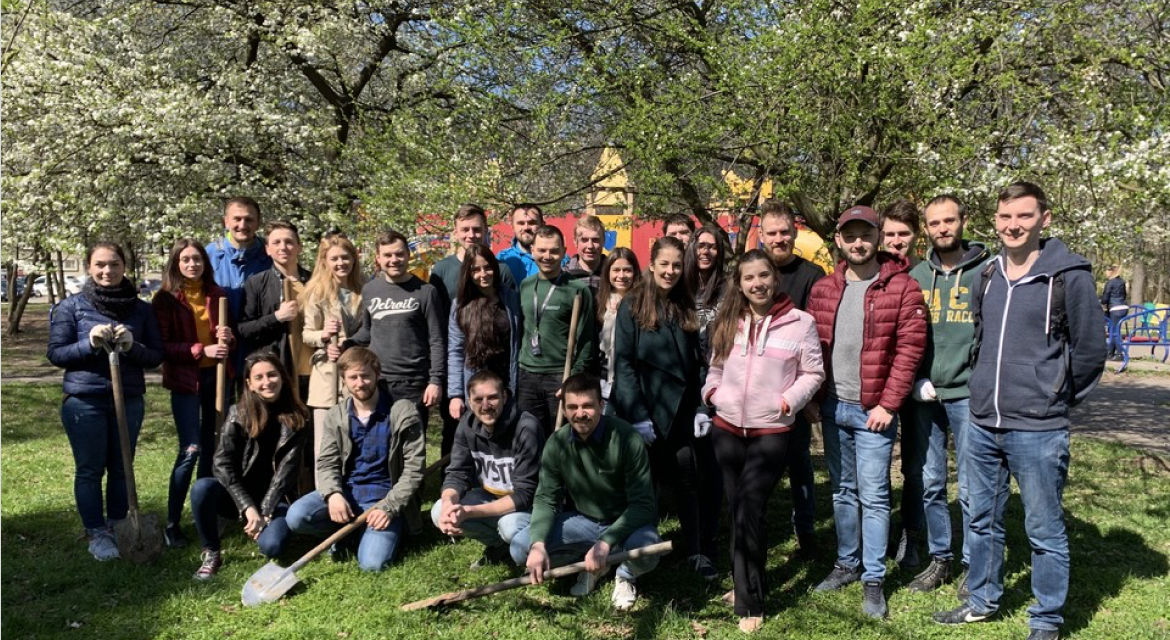Officially, Environment Day is on June 5th, but if we’re being realistic, every single day is Environment Day, isn’t it? As fun as the various flash mobs in June can be, preserving the ecosystems of an entire planet is not something you can do in one session. While governments and large corporations are making large gestures to try and improve the ecological situation on Earth, regular businesses and individuals are arguably no less important.
After all, with billions of people around, if each and every one of us does simple things, the almost imperceptible effect of individual decisions gets multiplied and reinforced, bringing us all to success. We analyzed what software companies like Lionwood can do (and are actually doing) to help the environment, and grouped these things into the “grand gestures” and “small but crucial things” to show how caring is not necessarily about picking your battles – in fact, it can be about small things.
Big picture, big moves, big words
When you’re looking at the big picture of software companies’ environmental efforts, first thing you notice is big initiatives, as well as huge (but somewhat vague) concepts that make it to the news headlines.
One obvious direction here is, well, developing software that’s specifically intended to help the environment. As of now, technology can use sophisticated data analytics for monitoring deforestation and biodiversity loss, or create applications that streamline energy consumption in smart homes and businesses, the capabilities are impressive. Take the Clean Air Challenge, where Google collaborated with Aclima to map air quality in California, using big data to provide insights that could lead to cleaner air initiatives. Through environmental-focused apps and platforms, IT companies can directly contribute to conservation efforts and sustainable practices across industries. A study from the Global e-Sustainability Initiative (GeSI) suggested that by 2030, digital solutions could help to cut global carbon emissions by as much as 20%.
But of course, we can’t all be developing such solutions – not that we don’t want to or can’t, it’s just that we develop what the customer wants, right? Here’s where the notions of circular economy come into play. These initiatives not only considerably shrink waste but also encourage the reuse and recycling of components. For example, HP’s commitment to a circular economy led to their recycling over 1.7 million tonnes of hardware and supplies by 2020, including 875 million HP ink and toner cartridges.
Another crucial area where the software and IT companies can make a difference is in extending the lifecycle of devices. A report by the United Nations University estimates that global e-waste reached 53.6 million tonnes in 2019, posing a substantial environmental challenge. Through strategies like encouraging modular designs that make repairs easier or pushing for software optimizations that maintain device performance over time, companies can mitigate this global issue. For instance, Apple’s introduction of iOS 15 in 2021 supported iPhone models as old as the iPhone 6S from 2015, allowing users to keep their devices for longer, which in turn helps to reduce e-waste.
6 small but important concrete steps
These were the things that actually made the news, but is there anything a software company can do on an everyday basis to be part of the solution? It turns out, there are six relatively simple things.
Going Partially Remote
What started as a quarantine measure for many, turned out to be quite an efficient practice by now. While we’re skeptical about reasons like reducing office resource use, reducing the need for commuting is actually a significant step towards sustainability. According to the American Community Survey, telecommuters in the U.S. alone saved about 3 million tons of greenhouse gasses in one year, equivalent to taking over 600,000 cars off the roads. We at Lionwood are also implementing the practice, with about 60% of our specialists working remotely, while those in the office are provided with biking infrastructure.
Trash Sorting and Waste Reduction
Implementing trash sorting and proactive waste reduction strategies in offices is critical for minimizing the impact of business operations on the environment. By doing so, companies not only decrease the amount of waste sent to landfills but also improve recycling rates. Google reported a diversion rate of 86% for waste from landfills due to composting and recycling efforts in their facilities worldwide. By setting stringent recycling policies and providing proper facilities to ensure waste is correctly sorted, IT companies can significantly reduce their overall environmental footprint and encourage more sustainable behaviors within the workplace. In other words, the least we can do is make sure we cut on plastic cups and stuff like that, and it actually works.
Energy-Efficient Offices
This can be as simple as upgrading to LED lighting; more significant steps can include investing in ENERGY STAR-certified equipment, and enhancing insulation can drastically reduce energy consumption. Adobe’s headquarters in San Jose achieved LEED (Leadership in Energy and Environmental Design) Platinum status and saw a decrease in energy use intensity by 37% through incorporating automated lighting, energy management systems, and efficient HVAC systems. At Lionwood, we have strategically placed lighting in such a way as to minimize energy consumption, and implement routines that allow to minimize the use of equipment like fridges and AC without compromising the comfort.
E-Waste Recycling
The gadgets we no longer use end up in the landfills that we often don’t see, often in places like Africa, but that doesn’t mean they don’t impact the overall ecosystem. It’s like the famous case with rubber ducks floating across the ocean after a shipwreck – you never know where they might end up, since Earth is a more holistic system than we typically imagine it to be. E-waste recycling is an essential initiative for IT companies to address the environmental and health challenges posed by improperly disposed electronic waste. With global e-waste projected to reach 74 million tonnes by 2030, promoting responsible e-waste recycling practices is more crucial than ever. Companies like Apple have introduced robot-based technology like “Daisy” that can disassemble 200 iPhones per hour, recovering valuable materials for reuse and ensuring proper recycling of components.
Optimizing the Code
This may look surprising to an outsider, but it makes perfect sense. After all, code runs on devices that consume electricity, and the more lines are executed, the more energy needs to be generated, the more coal burned, etc. Even things like seemingly innocent redundant FOR or WHILE loops in the code, when performed billions of times, will lead to increased energy consumption. Studies have demonstrated that more efficient code can reduce server workloads by up to 50%, leading to significant reductions in energy usage and CO2 emissions in data centers. By prioritizing performance optimization in software development, companies can ensure their products are not only powerful and effective but also environmentally friendly. So refactoring and other practices are not just good for the product, they’re good for the planet, as well.
Community-Level Initiatives
Engaging in community-level initiatives allows IT and software companies to extend their impact beyond corporate borders and directly contribute to local environmental efforts. And if the local community doesn’t really organize such events or initiatives, a local IT company can create a precedent by being the first to, say, install solar batteries in the city park or a bicycle parking lot in the city center.
Conclusions
Even though Lionwood, being a Ukrainian company, has limited options as to how to contribute to environmental initiatives (due to obvious and tragic reasons), we’re committed to doing what we can right now. What we’ve already tried out and practiced includes things like waste sorting, extending device lifecycle, and many others.
A considerable part of our specialists are now working remotely, while the office management is taking measures to ensure energy efficiency. Needless to say, our code is also thoroughly optimized, and our IT infrastructure is to a large extent cloud-based now.
We are looking forward to being able to extend our commitment to environmental protection, and happy to see many fellow companies out there doing the same thing.














